📦 Fast Delivery – Order Now!
💸 Shop Safely – 100% Money-Back Guarantee
👨🔧 Lifetime Customer Support
📦 Fast Delivery – Order Now!
💸 Shop Safely – 100% Money-Back Guarantee
👨🔧 Lifetime Customer Support
When you’re choosing a solar panel, you want performance. But you also need reliability. And you expect value. That’s why it makes sense to take a close look at our Solar Panel Test 2025. Several top brands manufacture high-efficiency panels right here or distribute premium modules across North America. While global giants lead the way, brands like Qcells, Hyundai, and Trina Solar are setting new standards—especially with their latest all-black bifacial and mono cell panels.

Because performance matters. And because warranties, efficiency, and long-term savings can vary drastically. That’s why independent solar panel tests remain essential. They show you which modules truly perform—not just in the lab, but on rooftops and in the field.
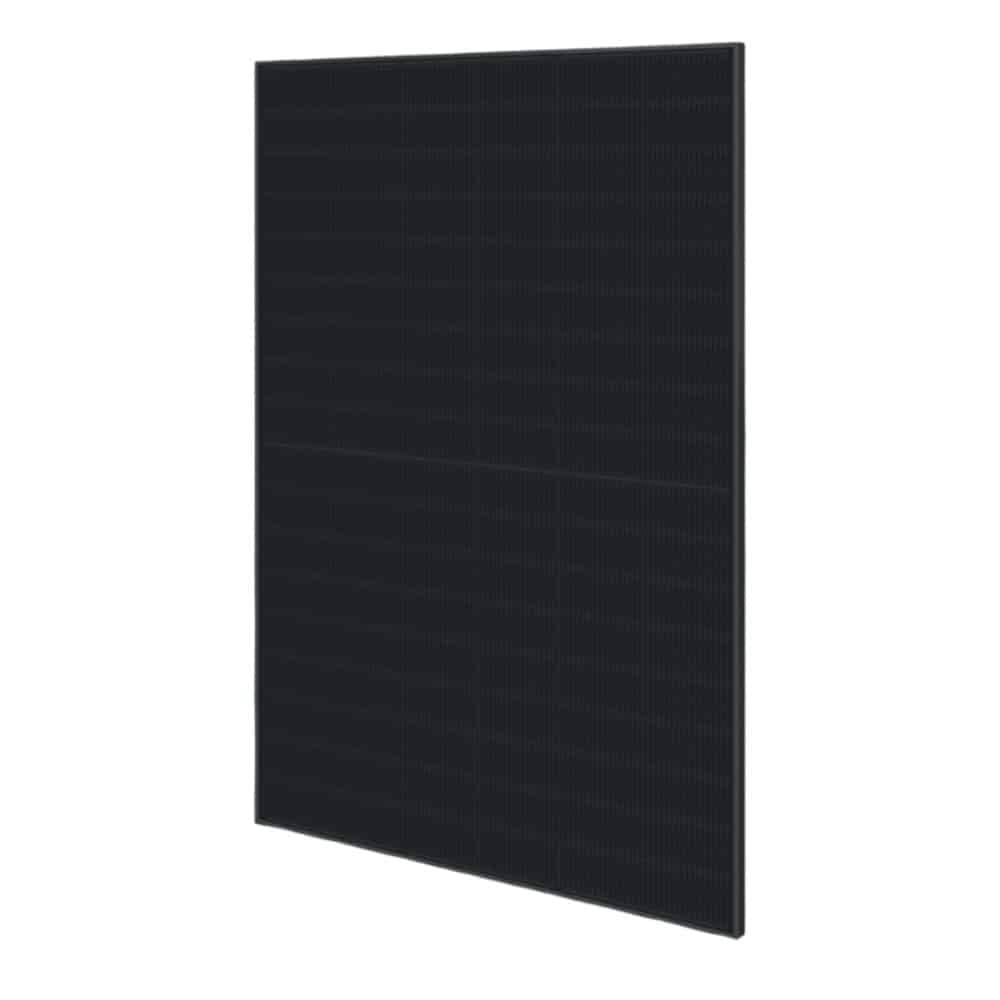
✅ 435 W bifacial panel with 108 half-cut N-Type TOPCon cells
✅ 22.28% efficiency with sleek all-black design
✅ 25-year product and 30-year performance warranty
Three panels stood out in this year’s solar test:
Each offers strong performance, modern cell design, and a clean black aesthetic—perfect for homeowners who want looks and efficiency.
Let’s start with Hyundai’s 435W bifacial panel. It uses half-cell and bifacial technology, meaning it also captures some light from the backside. While its front-side efficiency reaches around 21.8%, it can deliver up to 10% more energy yield in the right setup. This makes it ideal for carports or ground-mounts with reflective surfaces.
Qcells’ 435W mono panel, made with half-cut mono PERC cells, delivers about 21.5% efficiency. It’s reliable, shade-tolerant, and ideal for residential rooftops. Plus, it’s assembled in the USA and follows strict quality standards.
Trina’s 425W bifacial panel with 144 half-cut cells may offer slightly lower nominal wattage, but it compensates with bifacial gains, improved durability, and proven field performance. Its design is optimized for both residential and light commercial use, and it’s backed by advanced glass-glass construction.
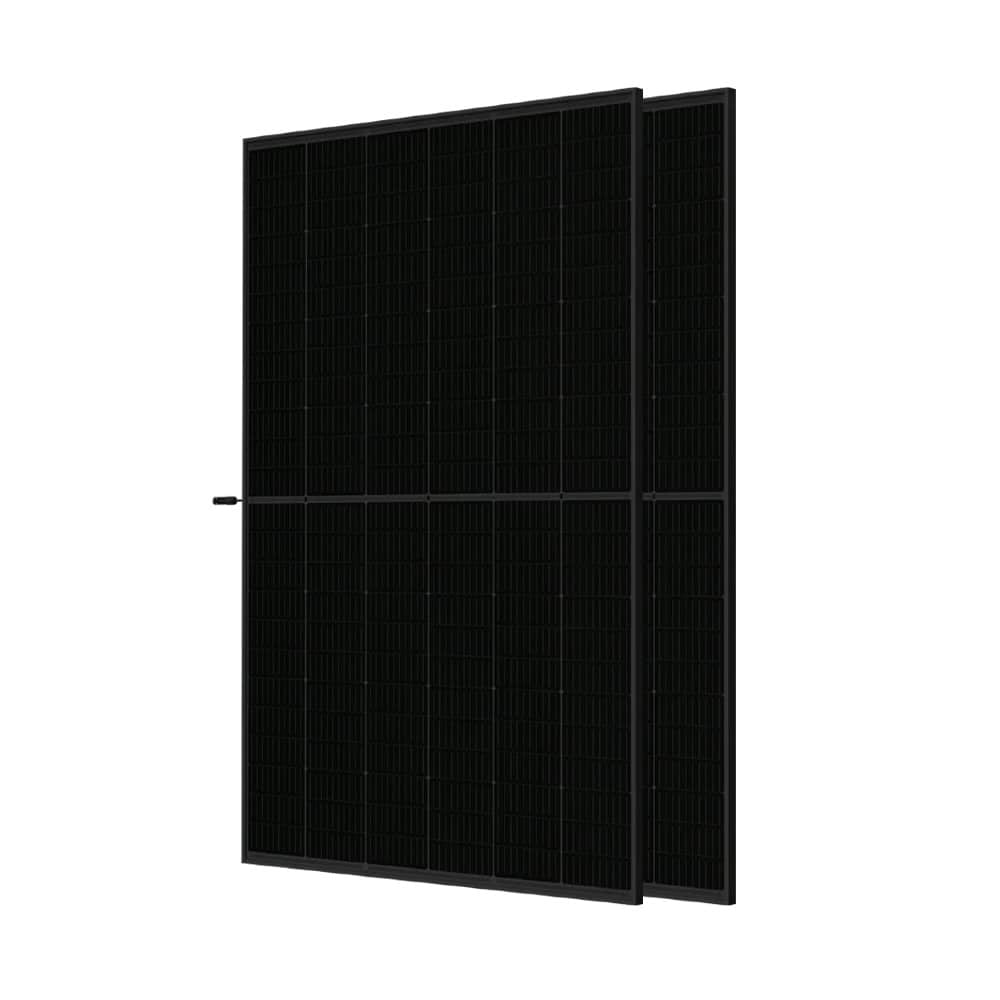
✅ High efficiency for maximum output (425W)
✅ Bifacial design for reliable performance
✅ Sleek all-black look, ideal for residential and commercial setups
Hyundai backs its panel with a 25-year product warranty and a 30-year performance warranty, promising 87.6% output after 30 years.
Qcells offers a 25-year product and performance warranty—strong support from a trusted U.S. brand.
Trina provides a 25-year product warranty and a 30-year performance warranty for its glass-glass bifacial 425W module, which is also certified for harsh weather, including high wind and snow loads.
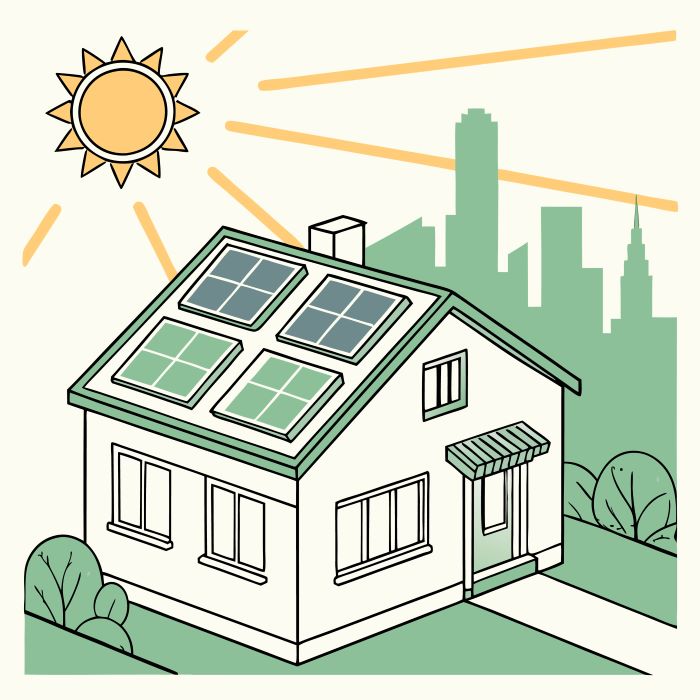
Each panel delivers strong return on investment. Qcells and Hyundai sit in the mid-range price bracket, giving excellent value. Trina’s 425W bifacial model, though slightly lower in wattage, may outperform others in the right conditions due to its rear-side gain and rugged construction.

✅ High efficiency for maximum energy yield (435W)
✅ Sleek all-black monocrystalline design for modern aesthetics
✅ Engineered for reliability and long-term performance
Looks matter—especially on a residential rooftop. That’s why all three top panels come in full-black designs. Whether it’s the sleek lines of the Qcells 435W Mono All Black, the premium finish of Hyundai’s bifacial panel, or the durable glass-glass design of Trina’s 425W module, each one blends seamlessly into modern roofscapes.
And because they’re dark, they absorb more light and reflect less glare—perfect for urban or design-conscious settings.
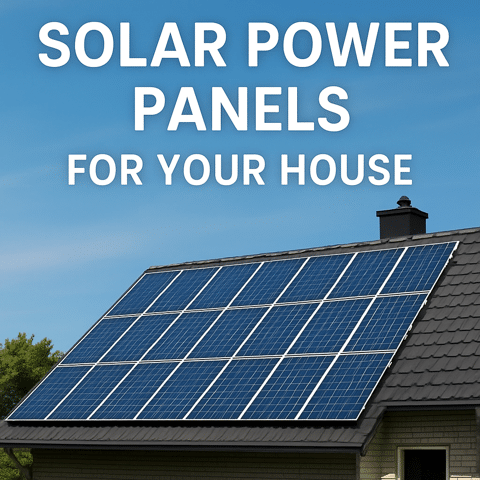
Manufacturers often promise high performance. But only independent testing under real-world conditions reveals the truth. Lab conditions can’t simulate snow, shade, heat, or partial clouding. This year’s solar panel test 2025 prioritized long-term output, temperature coefficient, and low-light behavior—factors that actually affect your energy yield.
So if you’re investing for 25+ years, data-backed decisions beat marketing claims every time.
At AceFlex GmbH, we help you make the right solar decision—every time. We guide you through choosing, ordering, and installing the best panel for your roof and budget. Whether it’s Hyundai, Qcells, or Trina, we’ve got the expertise and stock to make your project successful.
📞 Contact us today for a free consultation and get access to the top bifacial and mono panels—shipped fast, priced fair, and installed with care.
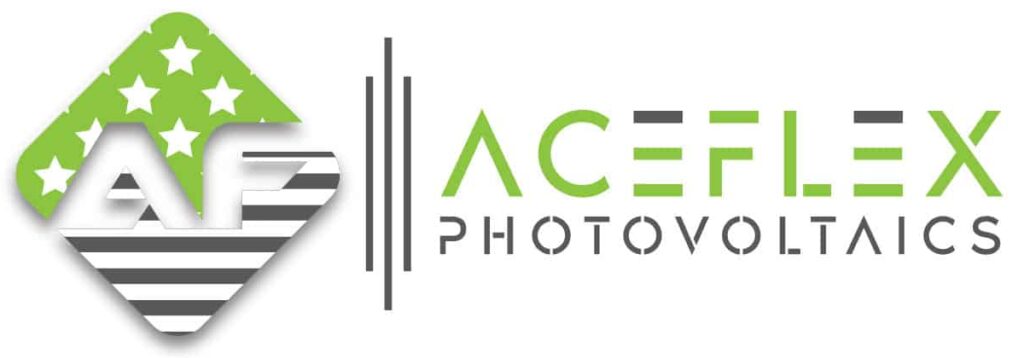
It depends on your roof, your budget, and your energy goals. If you want bifacial gains, Hyundai or Trina are strong choices. If you prefer U.S.-assembled quality with a clean look, go for Qcells. And if your goal is long-term durability with solid yields, Trina’s 144-cell bifacial glass-glass panel is a smart pick.

Use a multimeter to measure the panel’s voltage and current output, and make sure it matches the rated values. If sunlight is strong, but the output is low, then your panel likely has a problem.
Measure the panel’s open-circuit voltage and compare it with the manufacturer’s specs, because a large difference signals trouble. And check for cracks or discoloration, as these often reduce performance.
You can hire a certified technician who will inspect and test the system using pro-grade tools. Or you can start with a basic multimeter test and then decide if expert help is needed.
Divide the panel’s power output by the amount of sunlight it receives, and multiply the result by 100 to get the efficiency percentage. Though this gives an estimate, weather and dust can affect accuracy.
Log into your inverter’s monitoring app, because it shows your system’s energy production and consumption. And if you’re not connected digitally, check your inverter’s display regularly.
Most panels last 25 to 30 years, but they still produce power beyond that—just with lower efficiency. And while they degrade slowly, they rarely fail completely.
Yes, panels need occasional cleaning and visual inspection so dirt or debris won’t reduce output. And although they’re low-maintenance, ignoring them can hurt performance over time.
The average cost is between $15,000 and $25,000 before incentives, though pricing depends on location and system size. And tax credits can reduce your final cost significantly.
Yes, leave them on because they’re designed to operate continuously and safely. And turning them off wastes free energy and complicates system performance.
Panels don’t “go bad” quickly, but long-term disuse can lead to weathering and faster degradation. And storing them improperly may reduce future efficiency.
Solar panels are most efficient in spring and summer because of longer daylight hours and higher sun angles. However, cooler temperatures in spring can boost performance even further.
Yes, it’s safe, but you should avoid it for too long because voltage buildup can stress the panel. And always store or wire them properly when unused.
Test them at least once a year, because regular checks help spot small issues before they grow. And consider testing after extreme weather or unexpected drops in power.
No, direct sunlight is needed, because it activates the photovoltaic cells. And testing without sun won’t reflect real-world performance.
A multimeter and irradiance meter are essential, though thermal cameras help detect hotspots too. And safety gear is a must during testing.
You can’t test actual output at night, but you can inspect wiring and check inverter logs. And nighttime is perfect for maintenance or planning upgrades.
Dirt, shading, angle, and time of day all affect output during testing. And even small clouds can skew the data.
Compare current output to expected values in your monitoring system, because a sudden drop signals a problem. And visual signs like cracks or hotspots can confirm it.
Yes, especially for complex systems or safety concerns, since pros use advanced diagnostics. But DIY checks are helpful between pro visits.
AceFlex is one of the leading online retailers of renewable energy products and offers a wide range of solar products. We work with well-known manufacturers and wholesalers and can offer you cost-effective products in the field of photovoltaics so that you too can contribute to the energy transition.
Looking for an experienced team for planning your photovoltaic system without the hassle of doing it yourself? We are your trusted partner, offering comprehensive nationwide solutions. We provide expert consultation and supply of both photovoltaic systems and storage units tailored to your specific needs.
© 2025 Aceflex All Rights Reserved. Design by Media Pantheon, Inc.